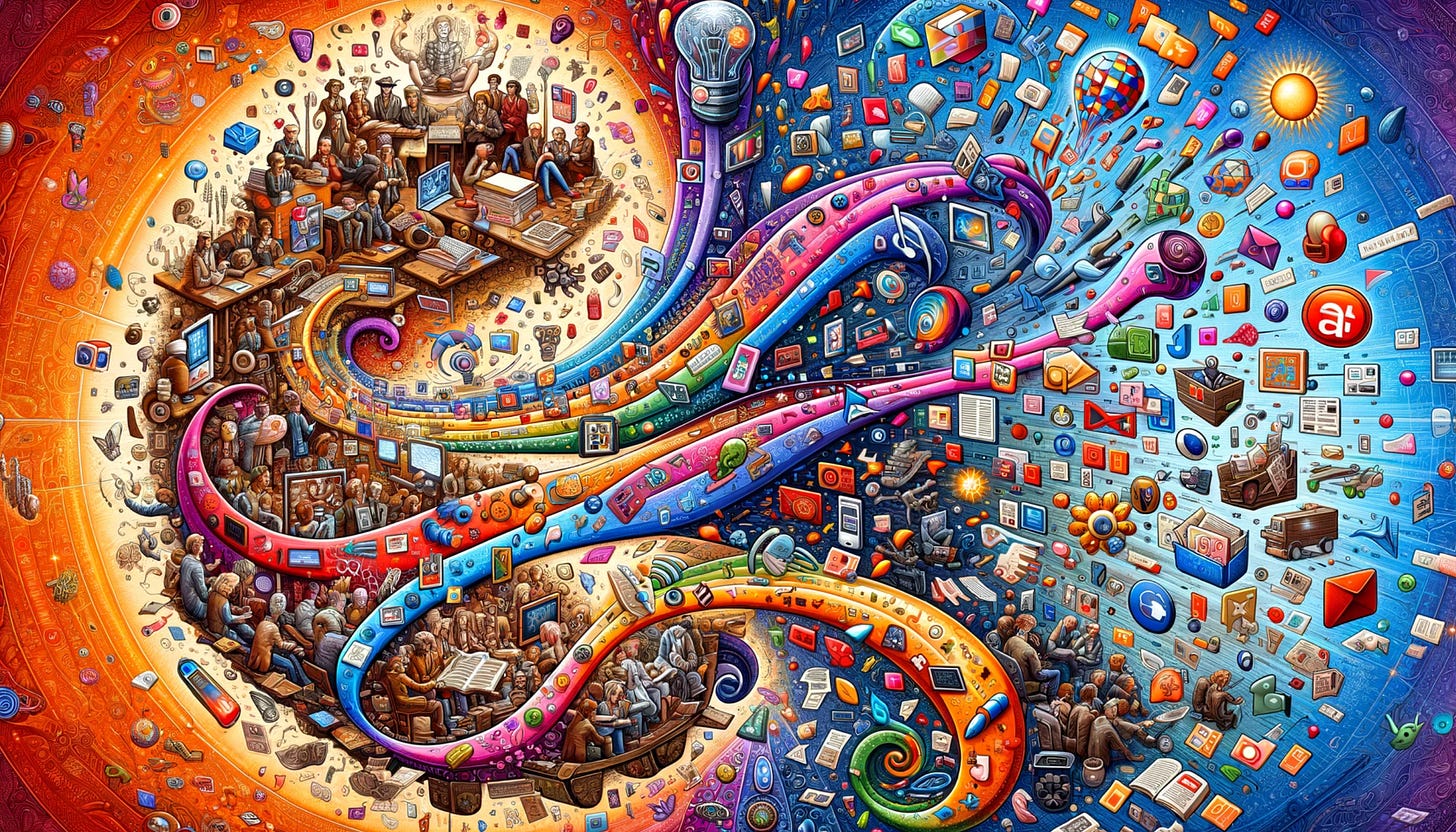Packetized Media
Packetized media is now the dominant media system. It has altered the way we think and is in the process of reorganizing society. Disruption and opportunity await.
The media we produce and consume is rapidly getting more granular and dynamic.
Books —> Essays and articles —> Posts (X, Reddit, etc.)
Movies and plays —> TV shows —> YouTube —> TikTok and X
Paintings —> photos —> Instagram and X
Letters —> e-mails —> messaging —> slang and emojis
By packetizing our media, we are doing something similar to what the Internet does to data.
Packetization deconstructs our information media into independently transmissible packets of facts, news items, ideas, feelings, and perspectives.
Packets flow into the network like puzzle pieces, searching for a puzzle they will fit into.
When we find a packet that may fit into a pattern we are developing (pattern matching), we pluck it from the torrential flow of packets streaming past us.
We then stitch these packets together — as individuals or in collaboration with loosely connected networked groups — to construct larger social constructs.
Packetized media has rapidly become the dominant form of media, although it’s important to note that dominance doesn’t mean replacement since the earlier forms of media don’t disappear; instead, as we’ve seen, these older types will be integrated into the new dominant form. Here’s how this shift happened.
Technological change makes a shift possible (social networking, starting in 2001, was the start of true packetization, and the mass adoption of smartphones made it available to everyone).
A dopaminergic effect drives early adoption -- if you want to fall asleep at night, read a book; if you want to stay awake, scroll X or TikTok. This dopaminergic effect fades as our brains build up a tolerance to it.
Repeated use of a new dominant media forcibly alters how we think and perceive reality—it actively rewires the neurons in our brains (as we saw with the mass adoption of reading during the Reformation).
This new method of thinking will inevitably force social reorganization.
In most previous cases, this social reorganization is modest (i.e., broadcast media) since the new dominant media is merely a variant of previous dominant forms.
That’s not the case with packetized media; it’s a foundational change.
The change it will cause will likely be as dramatic as the reorganization ignited by the rise of printed media (it led to bureaucracy, constitutions, contracts, financial markets, formal science, the press, etc. — everything we consider modern that replaced feudalism).
Moreover, due to the dynamism of this media and the rise of AI, this reorganization will occur far faster than we have seen previously.
It’s easy to think of this rapid shift from a traditional literary mindset to pattern matching as uniformly bad since it will be highly disruptive. The feudal nobility and the Catholic clergy in power during the Reformation thought the same thing about the mass adoption of reading and its disruptive influence (from printed Bibles to rampant pamphleteering). However, that’s a narrow, short-sighted view.
Packetization, pattern matching, and other forms of networked thinking provide far more dynamism and adaptability in a networked environment than literary mindsets that require prepackaged narrative context.
For example, networked thinking lets people rapidly contextualize information in a dynamic environment to spot opportunities (jobs, skills, investments, etc.) and potential dangers.
Most readers of this report are likely natural pattern matchers (as opposed to those currently being raised into it or forcibly converted) and have been relatively successful with this mode of thinking. For me, the arrival of the Internet in 1994 was akin to turning on the lights in a darkened house. The effect was so profound that I jumped at the opportunity to become the world’s first full-time (and still the most cited) professional Internet analyst in 1995.
Regardless of your sentiment, the shift is already here, and we need to figure out ways to minimize the damage it will cause and maximize the benefits. So far, in previous reports, we’ve identified a few of the societal dangers:


